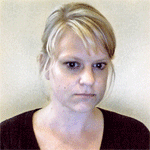from Jean-Luc Nancy, Being Singular Plural (2000) >
[Being singular plural means the essence of Being is only as coessence. In turn, coessence, or being-with (being-with-many), designates the essence of the co-,…… Coessentiality signifies the essential sharing of essentiality, sharing in the guise of assembling, as it were. This could also be put in the following way: if Being is being-with, then it is, in its being-with, the “with” constitutes Being; the with is not simply an addition. (p. 30)]
[“Self” defines the element in which “me” and “you,” and “we,” and “they,” can take place.”Self” determines the “as” of Being: if it is, it is as it is. It is “in itself” prior to any “ego,” prior to any presentable “property.” It is the “as” of all that is. This is not a presentable property, since it is presentation itself. Presentation is neither a propriety nor a state, but rather an event, the coming of something: of its coming into the world, where the “world” itself is the plane or the exposing of every coming. (p. 95)]














